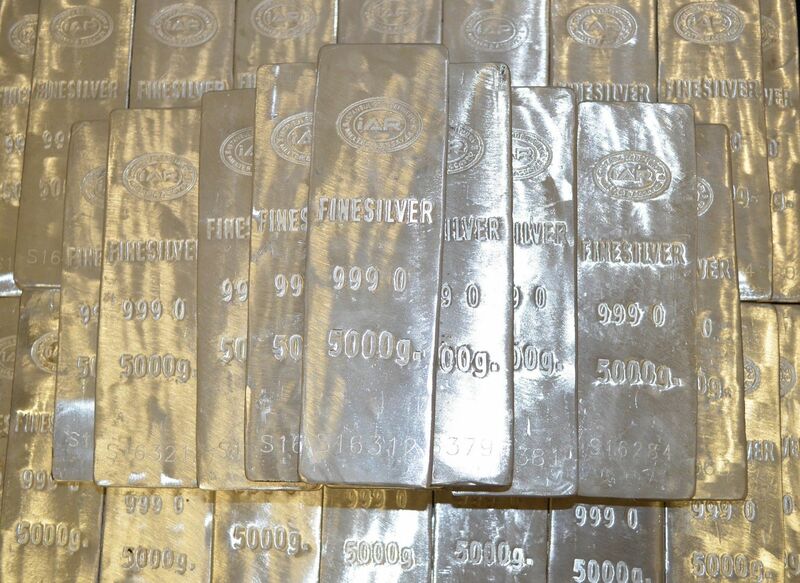
Gold has a long history as a means of exchange or currency. Central banks, governments, and monetary authorities validate gold’s role in the global financial system by holding gold bullion as an integral part of their foreign exchange holdings. Gold’s economic role has increased as central banks have added to reserves over the past years, providing a stable foundation for its value. If gold is analogous to the banknotes in our wallets, silver is the change in our pockets. For many years, many coins jingling in pockets contained silver.
While silver’s role in the financial system has declined, it remains a precious metal and gold’s sibling. Moreover, the industrial demand for silver has steadily increased, indicating a positive outlook for its future value.
The silver-gold ratio measures the ounces of silver value in each ounce of gold. In early April 2024, silver continues to lag behind gold’s performance. Still, it may only be a matter of time until gold’s sibling catches up with the yellow metal, presenting a potential opportunity for increased value.
The silver-gold ratio remains historically high
Gold’s rally to new record highs and silver’s price at half the 1980 peak have elevated the silver-gold ratio.

The silver-gold ratio chart ({GCM24}/{SIK24}) dating back to the late 1970s shows a 15.47:1 low in 1979 when silver was on its way to the over $50 high and gold was on a path towards over $800 per ounce. In March 2020, the ratio reached a 113:1 high when the pandemic gripped markets across all asset classes. In March 2020, silver price spiked lower to $11.735 while gold’s low was at the $1,452.10 level.
The silver-gold ratio has made higher lows for over a decade as silver has lagged behind its precious sibling. In early April, it was near the 90:1 level.
Silver has been consolidating on a potential launchpad
Gold has an established and integral role in the global financial system as central banks own the metal as a reserve asset and classify gold as a foreign exchange reserve. While silver played a similar role in history, silver’s volatility has precluded its use as a reserve asset.
Silver is an industrial and financial asset, and many investors continue to own silver as a safe asset.
In a March 3 Barchart article, I highlighted silver’s narrowing range over the past years. On March 3, silver’s range in 2024 was a mere $2.145. A March rally that took the nearby COMEX futures price to nearly $25.75 caused the range to widen to $3.81, a level that was significantly lower than the 2023 trading bank, which was narrower than the high-to-low ranges in 2020, 2021, and 2022.
A narrowing trading range in a futures market is a consolidation pattern. Like stretching a rubber band beyond its elastic capacity, the longer a price consolidation continues, the greater the odds of a significant move and reaction when the price breaks above technical resistance or below technical support. Given the record highs in gold, the potential for silver’s eventual breakout favors the upside.
Levels to watch in the silver futures market
The three-year COMEX silver futures chart highlights the sideways trading pattern.

While the chart since mid-2021 illustrates silver’s lack of bullish or bearish conviction, it outlines the significant technical levels that could lead to a long-overdue move. The critical technical support level is the late August $17.32 low, with the May 2021 $28.68 high crucial technical resistance. At $25.075 per ounce on the nearby May contract in early April, silver is above the $23 midpoint of the three-year trading range.
The case for silver is compelling
The bullish case for silver remains compelling. In the March 3 Barchart article, I highlighted the following bullish factors:
- Gold’s continuing bull market has been in place since the 1999 $252.50 low. At $2,095.70 on March 1, April gold futures were 8.3 times higher. May silver at $23.364 was times 5.8 higher than the 2001 $4.026 low. Therefore, silver could catch up if gold continues to make new record highs.
- The potential of a BRICS currency with gold backing and continuing central bank gold purchases is bullish for silver, reflecting a decline in the U.S. dollar’s value and role as the world’s reserve currency. A weakening dollar in the global financial system supports higher silver prices.
- Aside from its financial role, industrial demand for silver is rising. The Silver Institute projects industrial demand to increase by 8% to a record 632 million ounces.
- Silver’s tight trading range in the current environment suggests a significant move when the price moves above or below technical resistance or support levels.
In early April 2024, gold made even higher highs, and the market consensus favors Fed interest rate cuts before the end of 2024. Moreover, a highly contentious November election is on the horizon, which could translate into market volatility across all asset classes.
Gold has become expensive for individual investors seeking value and safety. Market participants can purchase almost 90 ounces of silver for each ounce of gold value, which could lead to an upside technical break. Silver prices could fly above the $30 level as a herd of trend-following buyers may descend on the market that has spent years consolidating.
SLV is the most liquid silver bullion ETF
The most direct route for a risk position in silver is via the physical market for bars and coins. However, silver is a bulk commodity, with each 1,000-ounce bar worth $25,000 weighing around 70 pounds, making storage a consideration. COMEX silver futures offer a physical delivery mechanism but involve leverage and margin and require futures accounts.
The fund profile for the iShares Silver Trust (SLV) states:

SLV holds physical silver bullion. At $22.88 per share, SLV has over $10.40 billion in assets under management. The highly liquid ETF trades an average of around 20.68 million shares daily and charges a 0.50% management fee.
The last rally in COMEX May silver futures took the price 17.06% higher from $22.19 on February 14 to $25.975 per ounce on March 21.

The chart shows SLV moved 16.6% higher, from $20.11 on February 13 to $23.45 on March 20. Since SLV trades during U.S. stock market hours and silver futures trade around the clock, SLV can miss highs or lows when the stock market is not operating.
The silver-gold ratio is trading at an elevated level on April 1, which is a mixed blessing. On the one hand, the metric tells us that silver continues to underperform gold. However, the high level could create a significant opportunity if silver is heading for an upside break that could take the volatile metal substantially higher over the coming months. I favor the upside for silver and believe each price correction is a buying opportunity.
On the date of publication, Andrew Hecht did not have (either directly or indirectly) positions in any of the securities mentioned in this article. All information and data in this article is solely for informational purposes. For more information please view the Barchart Disclosure Policy here.






